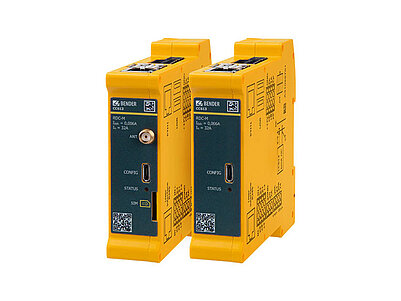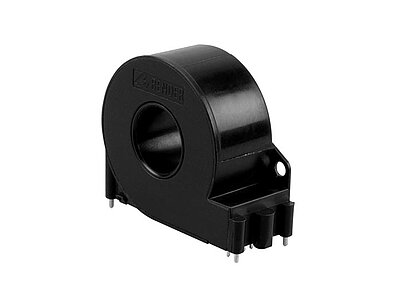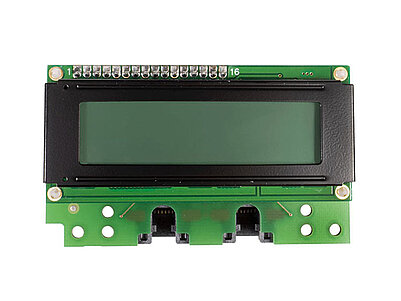

The upcoming new law on charging infrastructure in the residential and real estate sector requires the provision of a charging point raw installation in the private and commercial sector. This bill in particular makes careful planning indispensable for the successful establishment of an intelligent and sustainable charging infrastructure. The choice of the right EV charge controller is of fundamental importance.
The 6 mA DC residual current detection, according to IEC 62955, integrated in the CC613 charge controller detects DC residual currents in the controller and stops the charging process. This and the safety features mentioned below guarantee the property manager high availability of the charging infrastructure, reducing on-site visits by a service technician to a minimum.
The integrated charging plug emergency opener offers the advantage that in the event of a power failure, the end user can safely disconnect the charging cable from the charging station without you having to be on site or wait for a service technician.
The weld check integrated in the CC613 outputs an error message in case of a "sticking" contactor or load switch. Since in this case the power supply is not interrupted and thus a life-threatening current can flow, the weld check provides increased personal protection.
To further increase the safety against electric shock, the CC613 ensures a proper connection of the protective conductor (PE) to the controller with PE monitoring.
With the newly integrated 230 V control relay, the contactor can be switched directly with the CC613 for power release on the vehicle side.
An additional relay is no longer necessary. The emergency opener integrated in the charge controller also eliminates the need for a further additional component.
Thanks to the on-board 4G modem, the use of an additional mobile radio component is no longer necessary. This saves additional space.
This makes your charging point much more compact and space-saving, which is a great advantage especially in underground garages or cramped car parks.
The Ethernet interface integrated in the CC613 enables very simple interconnection of the charge controllers via Ethernet. A connection to an energy management system (EMS) via EEBUS or Modbus TCP can also easily be implemented. An EMS connection to control the charge controller core functions (start/stop of a charging process, max. charging current) is also possible via the external Modbus interface.
With the dynamic load management (DLM) integrated in the controller, the available power can be distributed among all charging points in a highly efficient and intelligent way. It is possible to implement a networked charging infrastructure with 250 charging points (master/slave) without an EMS connection.
Load management using a higher-level control system (EMS) is also possible, which allows easy integration into existing charging infrastructures.
The DLM prevents overloading of the network and thus damage to the electrical installation, which significantly reduces the risk of fire.
The integrated Ethernet interface together with dynamic load management enables you to implement networked and communicating charging infrastructures very easily.
The CC613 guarantees compliance with standards. Regular software updates ensure that the latest standards are always taken into account and new functions are added to the controller, guaranteeing future-proof operation of your charging station.
The Open Charge Point Protocol (OCPP)1.5 & 1.6 (JSON & SOAP) compliance provides you with two decisive advantages: On the one hand, your charging points can be integrated very easily into existing backend and roaming systems such as has-to-be, Virta, Plugsurfing, Hubject or others.
On the other hand, you can offer the end user a very convenient authorisation option via the RFID interface or via OCPP using an app or a QR code. Different RFID modules can be ordered separately and include authorisation via Giro-e. Furthermore, billing in combination with Modbus meters from different manufacturers is also possible.
With its Powerline Communication Standard (PLC) according to ISO 15118, the CC613 enables your charging station to implement plug & charge, with which the simplified and direct connection of the electric vehicle to the charging station is possible. Authentication takes place automatically via the charging cable with the charge controller and thus facilitates the charging process including billing. In addition, bi-directional communication with the vehicle serves as the basis for intelligent connection to energy management systems.
The PLC offers you future-proof technology such as plug & charge at an attractively low price. In addition, the charging technology can be tailored precisely to the needs of the user in the private sector and enables the end user to charge his electric vehicle conveniently.
Via the integrated 4G modem, you can connect your charging station directly to a backend and monitor the system, read out and, if necessary, directly correct errors and install remote software updates, thus making remote maintenance possible. As already mentioned, the use of an additional mobile radio component is no longer necessary.
| Name | Category | Size | Language | Timestamp | D-/B-Number |
|---|---|---|---|---|---|
| CC613 | Datasheets | 531.4 KB | EN | 2023/03/1010.03.2023 | D00381 |
| CC613 Charge Controller | Flyer | 248.6 KB | EN | 2025/11/0707.11.2025 | D00381 |
| Safer Charging with the New Generation CC613 | Technical article | 772.9 KB | EN | 2020/06/0505.06.2020 | |
| Bender Charge Controller CC613 | Tender texts | 113.1 KB | EN | 2022/06/2929.06.2022 |
Products

Charge controller in enclosure for DIN rail mounting for classic integration with standard components

AC/DC sensitive measuring current transformer – Accessory for charge controllers CC613 and ICC1324

Backlit LCD with alphanumeric display (2x16 characters) – Accessory for charge controller CC613

Charge controller in enclosure for DIN rail mounting for classic integration with standard components

AC/DC sensitive measuring current transformer – Accessory for charge controllers CC613 and ICC1324

Backlit LCD with alphanumeric display (2x16 characters) – Accessory for charge controller CC613
